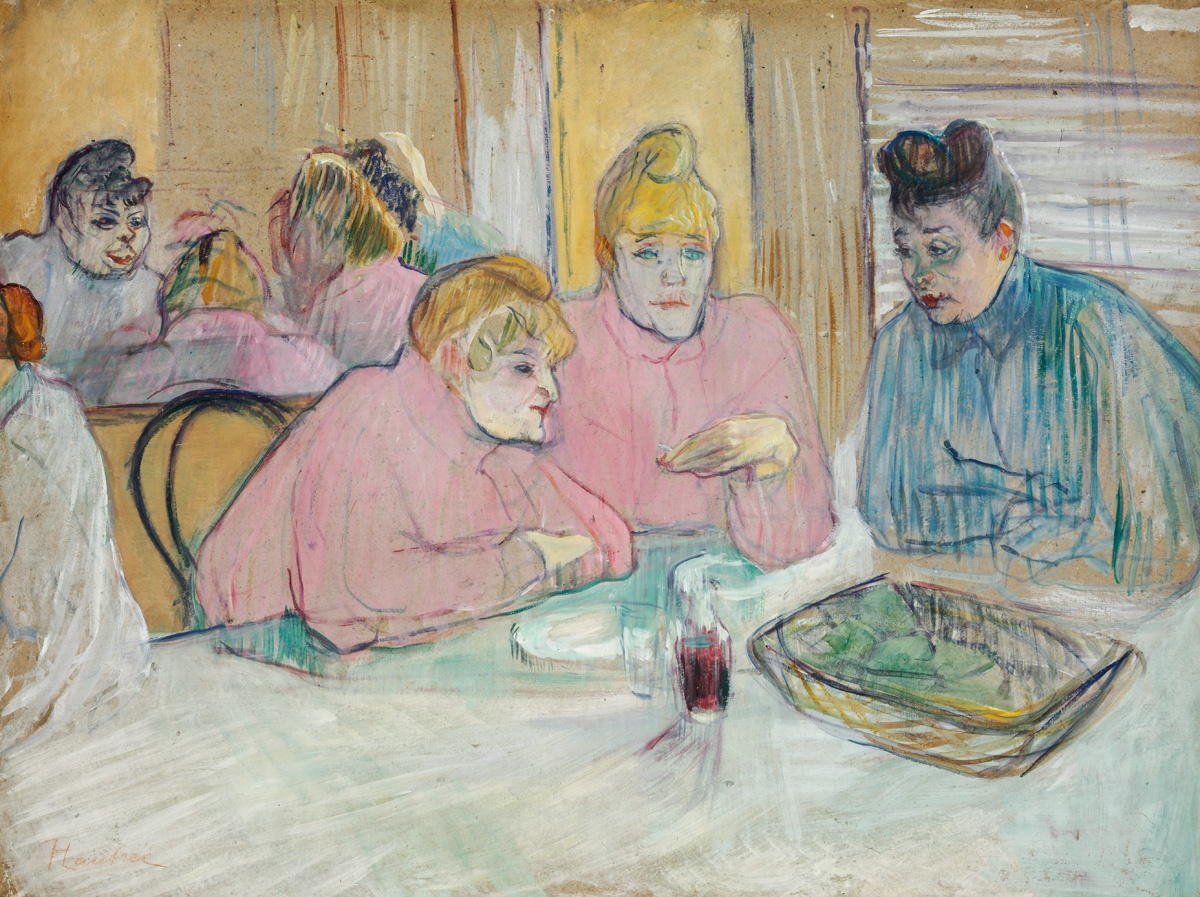Writers of the last third of the nineteenth century such as Zola and Maupassant were keen on taking as their subjects the oppressed fate of people living on the edge of society. Though of aristocratic lineage, due to a childhood accident which stunted his growth, Toulouse-Lautrec often felt shut out himself from the fashionable world of healthy people. He found his favourite models in the world lying beyond the reach of morality, in the nights of fin-de-si?cle Paris. As well as the smoky dens of Montmartre, and its danseuses, enveloped in curious mystery, he captured the everyday life of prostitutes with irony and deep empathy, even dignifying it. Many of his pictures are set in the brothel in Rue des Moulins, which opened in 1895. Thanks to the typical gestures and expressive faces, recorded with sharp psychological observation, some resident cocottes can be recognized on several pictures. Some of the exaggeratingly presented ’ladies’ here are also known by name. The fourth member of the company at table can be seen only in the mirror: this daring composition relates to the snap takes of photography. The fast, sketch-like brushstrokes in several places left the board’s own colour exposed, and with its raw materiality and warm tone it fits integrally in the composition’s atmosphere. The dynamic painting technique, the silhouettes shaded reservedly with colour, and the laconic directness of the way he captures the environment conjure up the mood of Lautrec’s Art Nouveau posters.Ferenc Tóth
en

